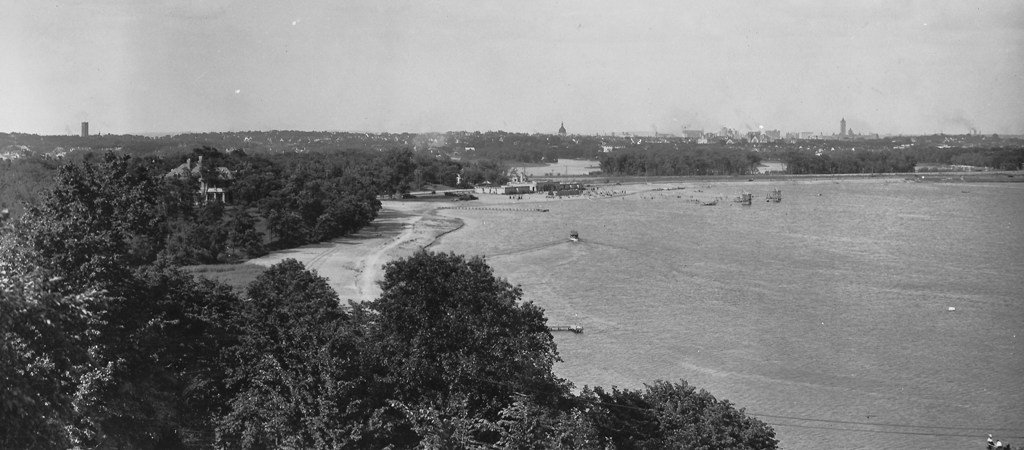
A history that continues to evolve.
While our neighborhood had its beginnings in Dakota culture, it is now a wonderful melange of different people and heritages from around the world.
The area is known as West Maka Ska because it is situated on the western shore of Bde Maka Ska, a Dakota name meaning White Earth Lake or White Bank Lake.
Before Europeans settled this area, Bde Maka Ska and environs were populated by Dakota people, but in 1817 a U.S. Army survey party discovered the lake and renamed it Lake Calhoun to honor Secretary of War John C. Calhoun.
Prior to its abandonment in 1839 there was a Dakota farming village on the south shore of the lake known as Heyate Otunwe, or Cloudman’s Village. It was here that the Dakota language was first recorded in writing, by missionaries Samuel and Gideon Pond.
(Minnesota Historical Society)
Early development
In the 1870s, Lake Calhoun, as it was then called, was a resort area. People came to the area to get away from the city. In 1874, Louis Menage developed a resort hotel on the western shore of Lake Calhoun, where the Minikahda Club stands today. The area was called Menage’s Lake Side Park. Visitors reached the park by a small steamer run by the Motor Line (which also ran trains to the area in hopes of cashing in on the resort business.)
The area was expected to “appeal to the super wealthy who would be able to commute to Minneapolis in their personal carriages.” However, Lake Side Park did not attract the super rich and the area was replatted in 1891 and the Minikahda Club was established in 1898. The golf course was opened as a nine hole course, but was expanded to eighteen holes by 1923.
(Minnesota Historical Society)
Much of the land around Bde Maka Ska was swampland. By 1900, only five houses had been built in the area just north of the Minikahda Club. The area was dredged in the early 20th century. Virtually all of the park, beaches and boulevards are built on man-made land.
In 1914, the Minneapolis Park Board purchased two launches and offered scheduled trips around Bde Maka Ska and into Lake of the Isles, Cedar Lake and Brownie Lake. Stops on the boat trip included 31st Street, 34th Street, Thomas Avenue, 36th Street (referred to as “Mineral Springs), “Spring Beach” (opposite the Minikahda Club) and Lake Street. The Park Board also operated a boat concession, renting rowboats and sailboats.
Honoring our Dakota heritage
It took almost 200 years before Minneapolitans began to question whether it was right to have a lake named after John C. Calhoun, given his reputation as a white supremacist and the nation’s most ardent and powerful defender of slavery. Whereas some Southern politicians had excused slavery as a necessary evil, Senator Calhoun called it a positive good in a speech on the Senate floor in 1837.
In 2017 the Park Board voted unanimously to restore the name of the lake as Bde Maka Ska. This decision was followed by legal challenges, but on May 13, 2020, the Minnesota Supreme Court ended the uncertainty by ruling in favor of the name change.
While the legal battle of the lake’s name was underway, the neighborhood council began surveying residents about their preferences for a neighborhood name. There was initially no consensus with about half of the surveyed residents not wishing a change and the other half favoring a change to either West Lake, after the light rail station that is now under construction, or to West Maka Ska. As we continued to survey residents and get more responses from renters and younger residents, sentiment began to shift in favor of a name change.
The police murder of George Floyd pushed the neighborhood council to take action. At a public meeting in July 2020, a motion was made to request that the city change the name of the neighborhood to West Lake. However, after hearing resident input in favor of honoring the neighborhood’s Dakota heritage with the name West Maka Ska, the council voted to request that name. In October 2020, Minneapolis City Council approved renaming of our neighborhood as West Maka Ska.


